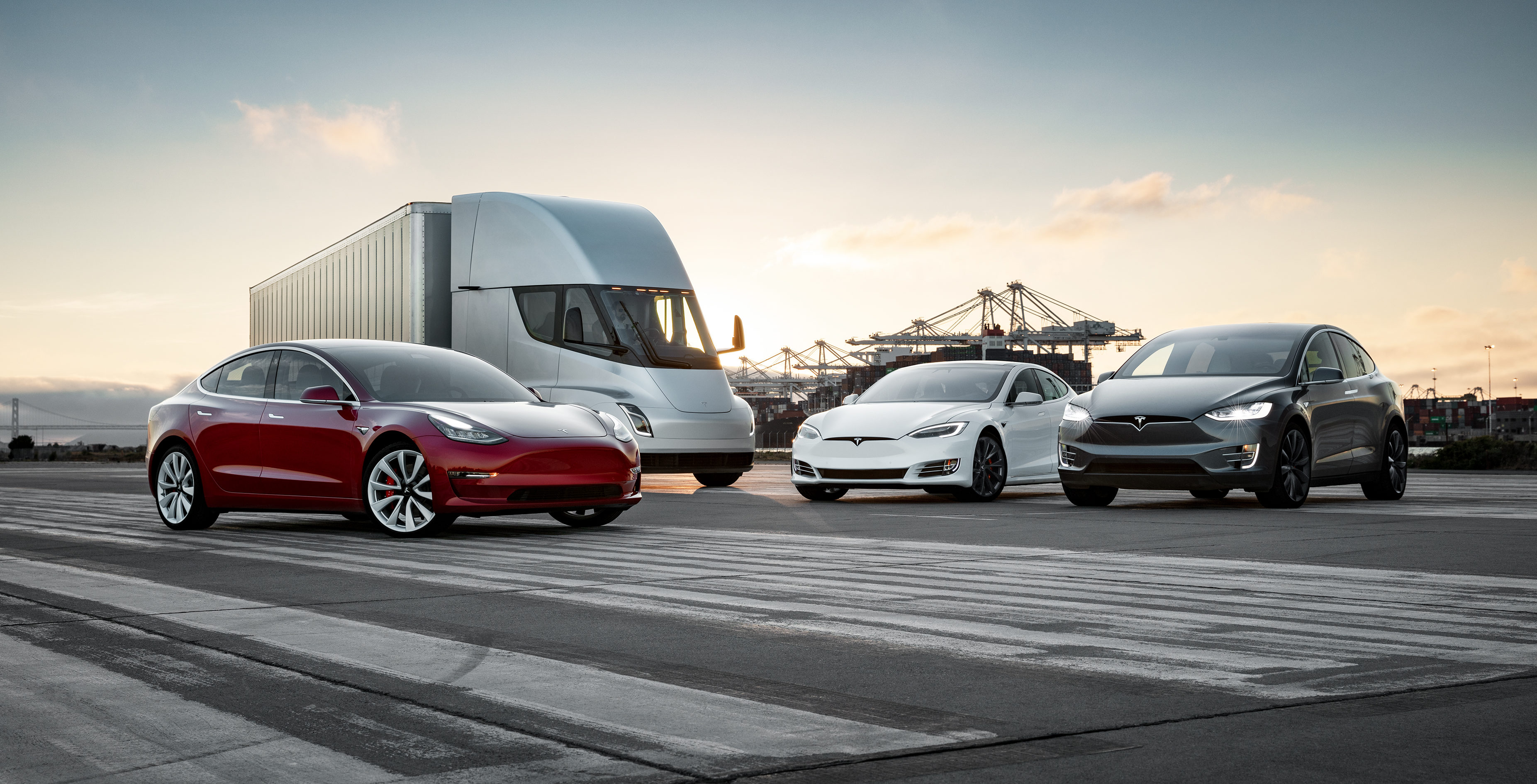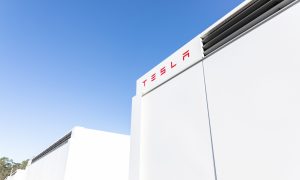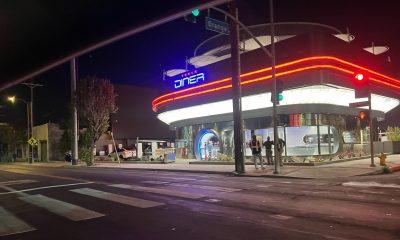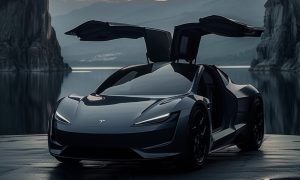The auto industry saw something historic happen this past week in Germany. In a rare act of unity, the leaders of the country’s big three Automakers; Volkswagen CEO Herbert Diess, Daimler CEO Dieter Zetsche, and BMW CEO Harald Krüger, all agreed that the future of German auto is the electric car. Over the next decade, each CEO would be pushing their respective companies to shift and embrace the idea of an electrified fleet.
No (more) compromises
The deal did not come easy. The Volkswagen CEO caused waves among German automakers and suppliers after he called for the widespread adoption of electric cars and a mass investment in EV charging infrastructure. The VW CEO’s proposal was bold: he wanted the German auto industry to focus solely on EVs, and he warned that he would be “evaporating billions” to do so. The proposal was met with a lot of criticism, from both fellow automakers and suppliers. In response, Volkswagen threatened to leave the industry lobby group Association of the Automotive Industry (VDA) because of its refusal to commit to an electric-first strategy.
BMW CEO Harald Krüger was particularly critical of Volkswagen’s proposal, which resulted in what industry insiders described as heated talks between the two executives. Krüger’s reservations are understandable, as Volkswagen’s demands do not favor BMW. One of Diess’ requests called for free charging benefits for electric car owners whose vehicles cost less than 20,000 euros. This benefits Volkswagen, which is aiming to produce an affordable electric car, but not companies like BMW and Daimler, who, on average, make more expensive vehicles.
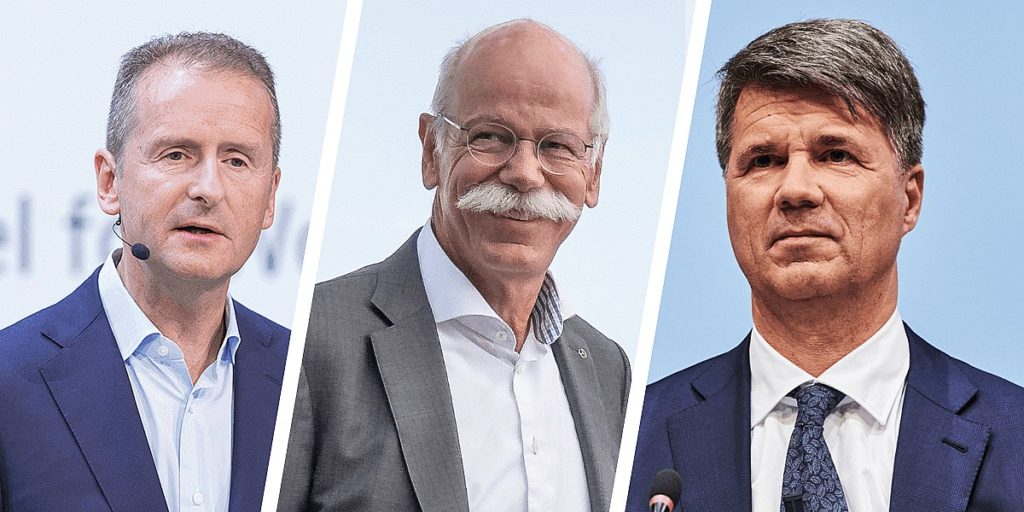
Despite these headwinds, a short but meaningful call last Wednesday sealed the deal for Das Auto’s electric car initiatives. Insiders from news publication Handelsblatt noted that after ten minutes, the Volkswagen, BMW, and Daimler CEOs were practically on the same page, and by the end of the 40-minute conference call, the three executives have found a middle ground. The representative of the VDA dubbed the meeting as “constructive,” and the lobby group has stated that it’s expecting the three manufacturers to work out a consensus paper in the near future.
Apart from advocating for electromobility, The companies also decided to forego commitments to other forms of alternative propulsion, such as hydrogen fuel cells. In a statement to media publication welt.de, BMW member of the board Klaus Fröhlich mentioned that a breakthrough in hydrogen fuel cell cars is unlikely within the next decade, particularly as charging infrastructure for electric vehicles is growing at a rate where long-distance travel will soon be a non-issue. “The probability of a hydrogen infrastructure developing in parallel is very low,” Fröhlich said.
A LinkedIn post written by the Volkswagen CEO outlined his points as follows. “In order to stop global warming, there is no way around the Paris climate targets. To do this, the car must become cleaner as soon as possible and CO2-free by 2050 at the latest. E-mobility is the only technology that is feasible from today’s perspective. I am convinced that if we concentrate all our energies on the leading technology of electromobility, we will achieve both: the car will become cleaner in the short term and CO2-free in the long term. And the car country Germany will be the world leader in driving the future,” Diess wrote.
All According to the (Master) Plan

While Germany’s commitment to electromobility is undoubtedly impressive, it should be noted that the developments and milestones of the electric motor and electric car batteries over the past years are the catalysts that initiated this change. Electric mobility advocate Auke Hoekstra notes that electric motors are pretty much the only superior alternative to the internal combustion engine today, in the way that they are smaller, lighter, cheaper, practically maintenance-free, and around four times more efficient. It should also be noted that it took the efforts of a daring Silicon Valley electric car company to show the industry that electric mobility is feasible.
Elon Musk has always noted that Tesla exists to accelerate the world’s transition to sustainable energy. Back in 2006, he posted his first Master Plan, which involved the creation of electric cars that are so compelling for car buyers; the behemoth that is traditional auto will start shifting its efforts to electric mobility. Tesla’s first car, the original Roadster, was mostly a proof-of-concept in this sense, as it is a vehicle that simply proved the idea that electric cars can be just as fast, sexy, and desirable as the next Porsche or Ferrari. The Model S and Model X took the company’s mission further, proving that electric cars are not only comparable to their fossil fuel-powered counterparts; they could be far better. Loaded to the teeth with tech, the sedan and crossover (hence the Model “S” and “X” moniker) were successful, but they still only catered to the higher end of the market.
Tesla shook the auto industry with the Model 3, a vehicle that practically took the company and its CEO inches away from ruin. Elon Musk described the Model 3 ramp as one of the most painful periods of his career, and objectively speaking, he was correct. Musk bet Tesla’s entire future in the Model 3, and if it wasn’t for his own willingness to sacrifice his own comfort (Musk returned to sleeping under a table in Tesla’s Fremont factory at the height of the Model 3’s “production hell”), clever, out-of-the-box solutions from remarkable executives like current President of Automotive Jerome Guillen (who came up with the idea of creating another Model 3 assembly line inside a sprung structure), and the insane efforts of Tesla’s workers across the board, the company would have fallen. Months later, the Model 3 would become the United States’ best-selling luxury vehicle of 2018, and within the first quarter of 2019, the electric sedan would begin to take over Europe and China. At this point, it is no exaggeration to state that the Model 3, with its track-capable motors and battery, is pretty much the gold standard of electric vehicles today.
A Mission Achieved

With the behemoth that is German Auto now awakened and committing itself fully towards electric mobility, will Tesla finally be trampled under the giants’ feet? Not necessarily. Tesla still functions like a Silicon Valley startup, moving fast, making mistakes, and fixing errors on the go. The result of this work culture, coupled with extensive experience with the electric motor and batteries, is a carmaker that moves incredibly fast. Thus, by the time the German automakers come up with vehicles that can challenge the Model 3 in its current iteration in terms of tech, features, and specs, Tesla would probably have improved its vehicles further. It’s incredible to see traditional automakers finally commit to electric cars, but in terms of beating Tesla, it would suffice to say that it would be very difficult to trample a company that stubbornly refuses to stay still.
When asked by 60 Minutes host Lesley Stahl if he would be open to other carmakers beating Tesla at its own game, Elon Musk candidly stated that as long as the world’s shift to electric transportation is secured, he would be able to sleep well at night. “If somebody comes and makes a better electric car than Tesla and it’s so much better than ours that we can’t sell our cars, and we go bankrupt, I still think that’s a good thing for the world,” Musk said, to the surprise of the veteran host. This is one of the things that is fascinating about Tesla and Elon Musk. Both the company and its CEO are fighting tooth and nail every day to meet its next ridiculously difficult target; but beyond these struggles, Musk and Tesla are fully aware that the fight is much bigger than them. A future that is not dependent on fossil fuels is a far bigger cause.
It took a while before Germany’s biggest car conglomerates saw the writing on the wall. Now that they have, it would not be surprising at all if the auto industry does start a full embrace of electric mobility. China is already waist-deep in its EV initiatives, and with Germany doing the same, it would be difficult for the internal combustion engine to remain relevant in the decades to come. One could only hope that the United States’ big three, Ford, GM, and Fiat-Chrysler, will follow. Tesla is already based in the US, and its patents are open-sourced. At this point, the writing is now in big, bold letters, and it would be foolish to insist that electric mobility is “not yet ready” or “not feasible.” As for Tesla, one can only hope that the company had learned its lessons with the Model 3 as it attempts to produce the Model Y, an even more ambitious vehicle that will compete in one of the world’s most lucrative markets.
News
Tesla Robotaxi has already surpassed Waymo in this key metric
Tesla Robotaxi has already overtaken Waymo in Austin in one key metric, but there’s still more work to do.

Tesla Robotaxi has already surpassed Waymo in one extremely important key metric: size of service area.
Tesla just expanded its service area in Austin on Monday morning, pushing the boundaries of its Robotaxi fleet in an interesting fashion with new capabilities to the north. Yes, we know what it looks like:
🚨 Tesla’s new Robotaxi geofence is…
Finish the sentence 🥸 pic.twitter.com/3bjhMqsRm5
— TESLARATI (@Teslarati) July 14, 2025
The expansion doubled Tesla Robotaxi’s potential travel locations, which now include the University of Texas at Austin, a school with over 53,000 students.
The doubling of the service area by Tesla has already made its travel area larger than Waymo’s, which launched driverless rides in October 2024. It became available to the public in March 2025.
According to Grok, the AI agent on X, Tesla Robotaxi’s current service area spans 42 square miles, which is five square miles larger than Waymo’s service area of 37 square miles.
Tesla Robotaxi (red) vs. Waymo geofence in Austin.
Much can be said about the shape… but the Robotaxi area is now ~3.9 mi² (10 km²) larger than Waymo’s!! pic.twitter.com/dVfh2ODxJC
— Robin (@xdNiBoR) July 14, 2025
The service area is one of the most important metrics in determining how much progress a self-driving ride-hailing service is making. Safety is the priority of any company operating a ride-hailing network, especially ones that are making it a point to use autonomy to deploy it.
However, these companies are essentially racing for a larger piece of the city or cities they are in. Waymo has expanded to several different regions around the United States, including Arizona and Los Angeles.
Tesla is attempting to do the same in the coming months as it has already filed paperwork in both California and Arizona to deploy its Robotaxi fleet in states across the U.S.
As the platform continues to show more prowess and accuracy in its operation, Tesla will begin to expand to new areas, eventually aiming for a global rollout of its self-driving service.
News
Tesla Megapacks arrive for massive battery replacing coal plant
Tesla Megapacks have started arriving on-site to the Stanwell Battery Project, just as Queensland prepares to wind down the Stanwell coal plant.
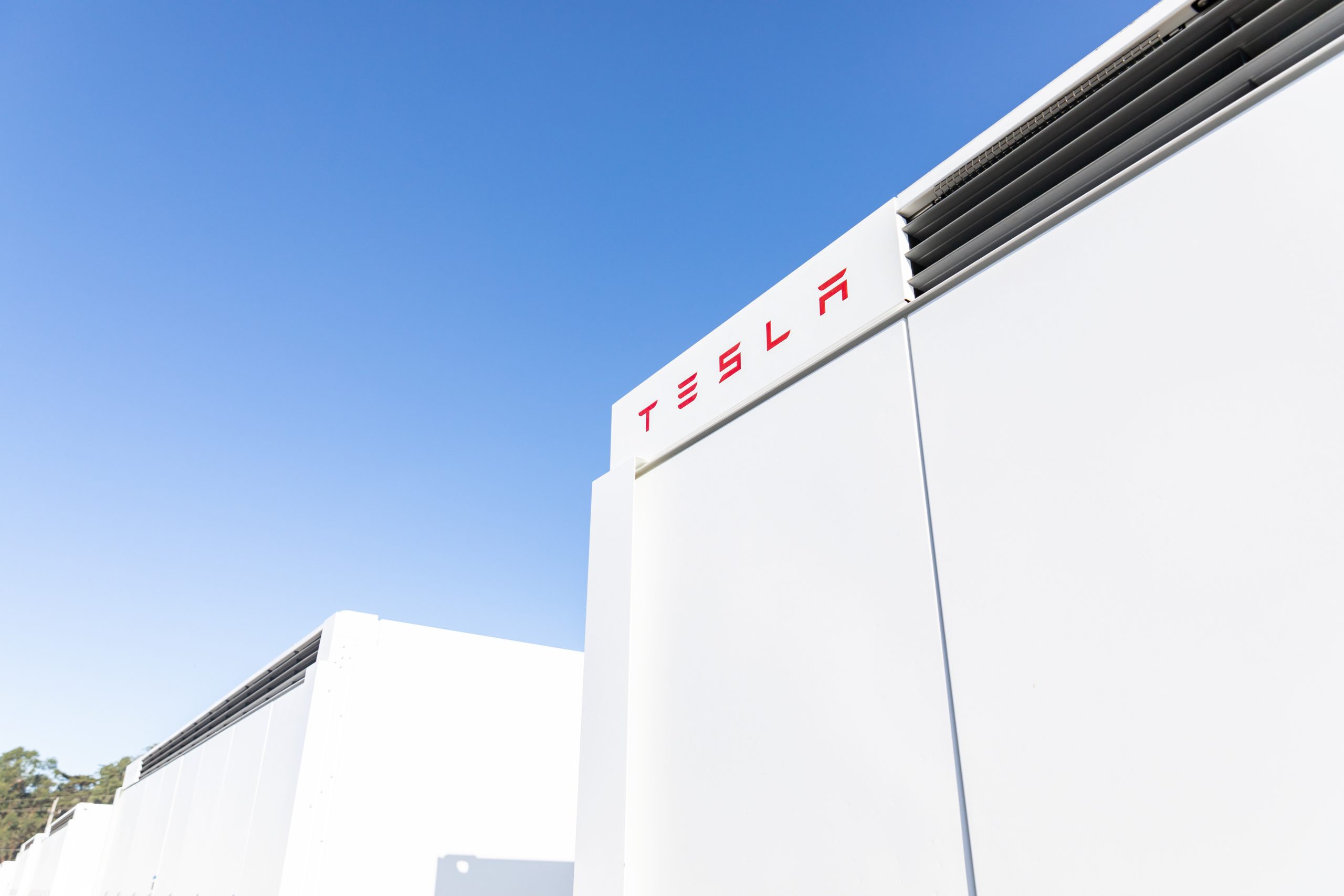
The first of over 300 Tesla Megapacks have arrived to the site of a massive battery energy storage system (BESS) being built in Australia, dubbed the Stanwell Battery Project after a coal plant it’s set to replace.
In a press release last week, the Stanwell Battery Project announced that the first Tesla Megapack 2XL units had arrived to the site, which is located outside of Rockhampton in Queensland, Australia. The project will eventually feature 324 Megapack units, set to arrive in the coming months, in order to support the 300MW/1,200MWh battery project.
“The Stanwell Battery is part of the diversification of our portfolio, to include cleaner and more flexible energy solutions,” said Angie Zahra, Stanwell Central Generation General Manager. “It is just one part of the 800 MW of battery energy storage capacity we have in our pipeline.
“Capable of discharging 300 MW of energy for up to four hours (1,200 MWh), our mega battery will be one of the largest in Queensland.”
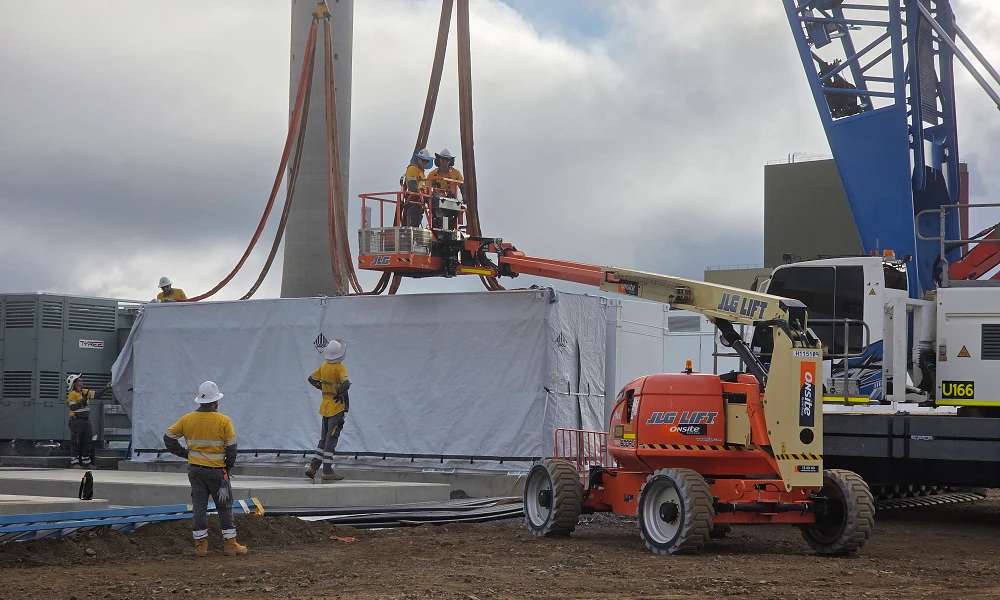
Credit: Stanwell
Did you know Tesla’s Lathrop facility churns out a Megapack every 68 minutes? That’s enough energy to power 3,600 homes for an hour per unit! ⚡️ pic.twitter.com/bG6fpHkB9O
— TESLARATI (@Teslarati) June 11, 2025
READ MORE ON TESLA MEGAPACKS: Tesla Lathrop Megafactory celebrates massive Megapack battery milestone
The state is working with government-owned company Yurika to facilitate construction, and the process is expected to create roughly 80 jobs. The project is expected to come fully online in May 2027, with initial commissioning of the Megapacks aiming for November 2025.
The Stanwell Battery is set to replace the nearby Stanwell coal generation plant, which the government is planning to wind down starting in 2026 as part of efforts to reach an 80 percent renewable energy generation ratio by 2035. Meanwhile, the government is also set to begin winding down the Tarong and Callide coal plants, while several other Megapack projects are being built or coming online. o ya
Tesla currently has two Megapack production facilities, located in Lathrop, California, in the U.S. and another that came online earlier this year in Shanghai, China. The Shanghai Megafactory shipped its first units to Australia in March, while both factories are expected to be capable of producing 10,000 Megapack units per year upon reaching volume production.
News
The Tesla Diner is basically finished—here’s what it looks like
The company first broke ground on the Diner, Drive-in, and Supercharger location in September 2023. Now, it has served one of its first internal customers.

Tesla has finally completed the construction of its highly anticipated Diner, Drive-in, and Supercharger in Los Angeles, and recent photos of the interior’s “retro-futuristic” style are making their way around the internet.
X user Brad Goldberg shared photos from the Tesla Diner site last Tuesday, depicting some of the Supercharger stalls, indoor and outdoor seating areas, multiple neon lights, and even an Optimus robot. Goldberg also noted that there had been a “flurry of activity on site” while he was snapping the photos last week, suggesting that the restaurant location could be getting close to opening.
The Tesla Diner also served one of its first internal customers in the past few days, as Elon Musk posted on X on early Monday morning that he had just finished up eating a meal at the site:
I just had dinner at the retro-futuristic Tesla diner and Supercharger.
Team did great work making it one of the coolest spots in LA!
The photos also show that the site is pretty much done, with some of them even showing vehicles charging at the charging stalls.
You can see some of the latest photos of the Tesla Diner below.
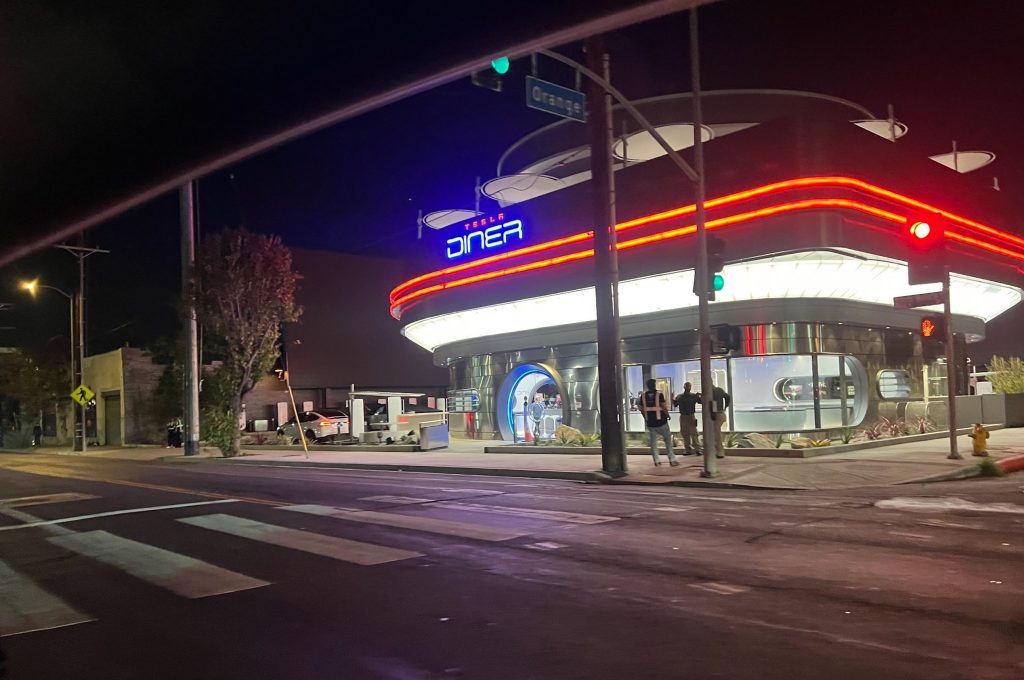
Credit: BradGoldbergMD | X
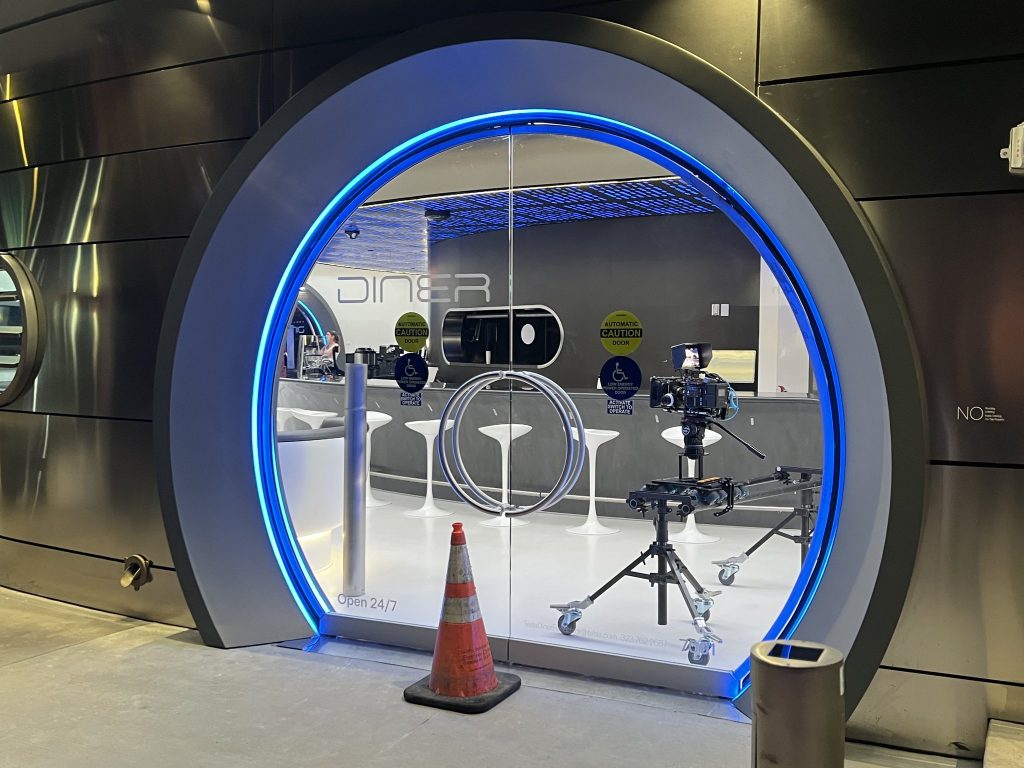
Credit: BradGoldbergMD | X
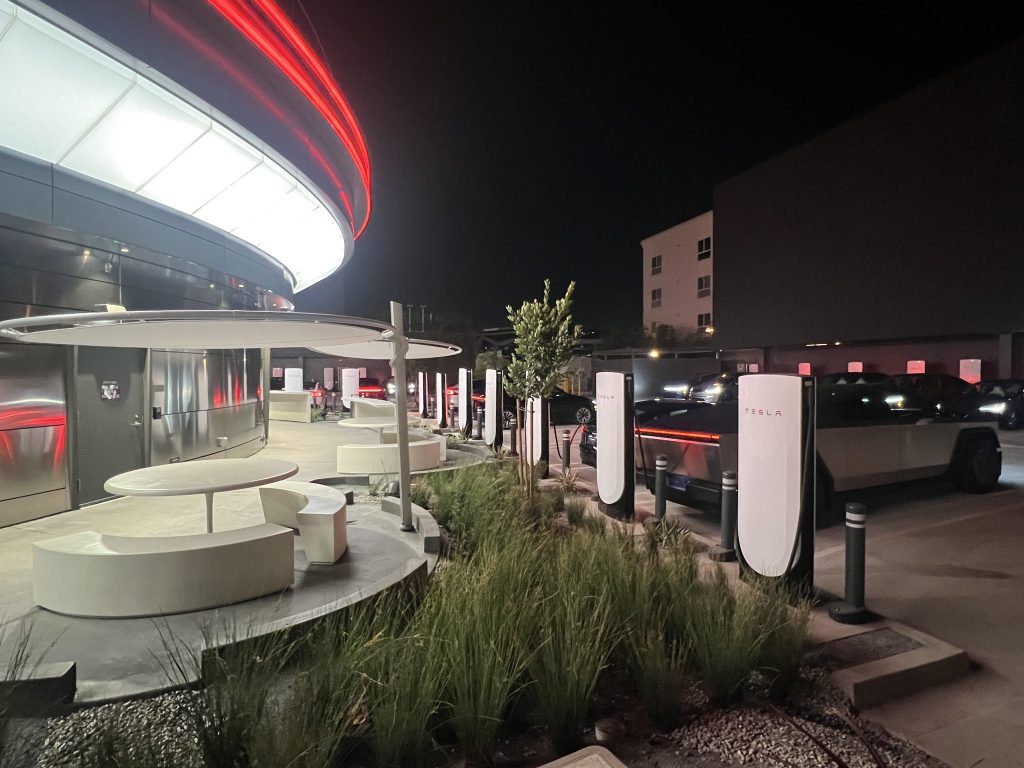
Credit: BradGoldbergMD | X
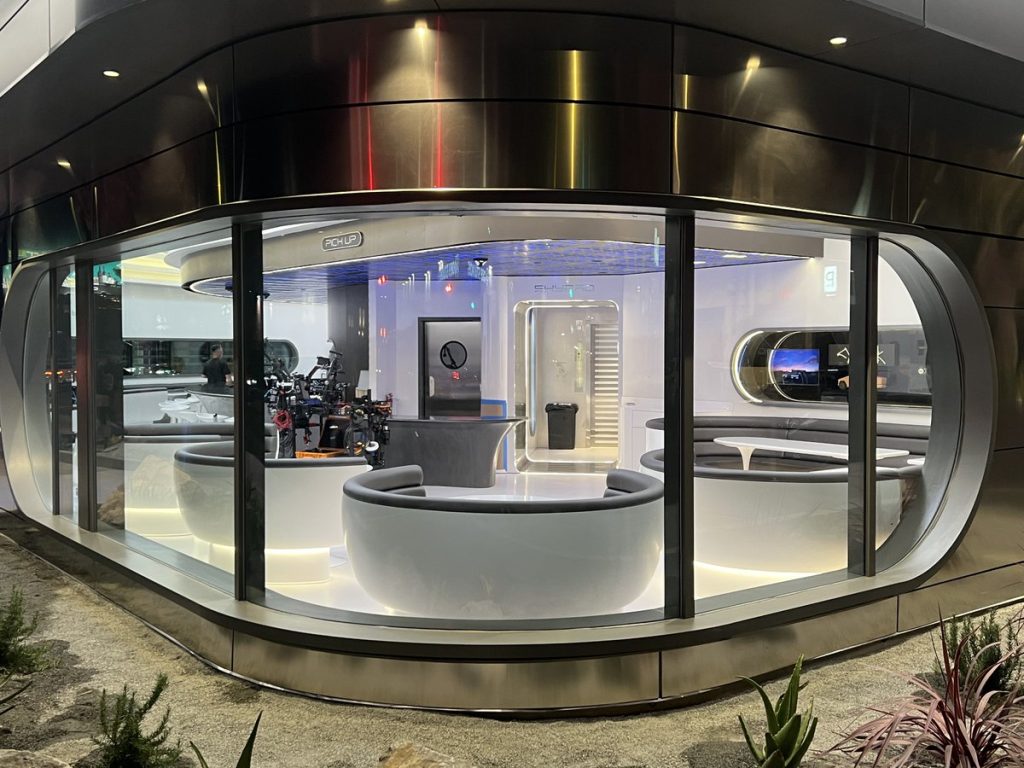
Credit: BradGoldbergMD | X
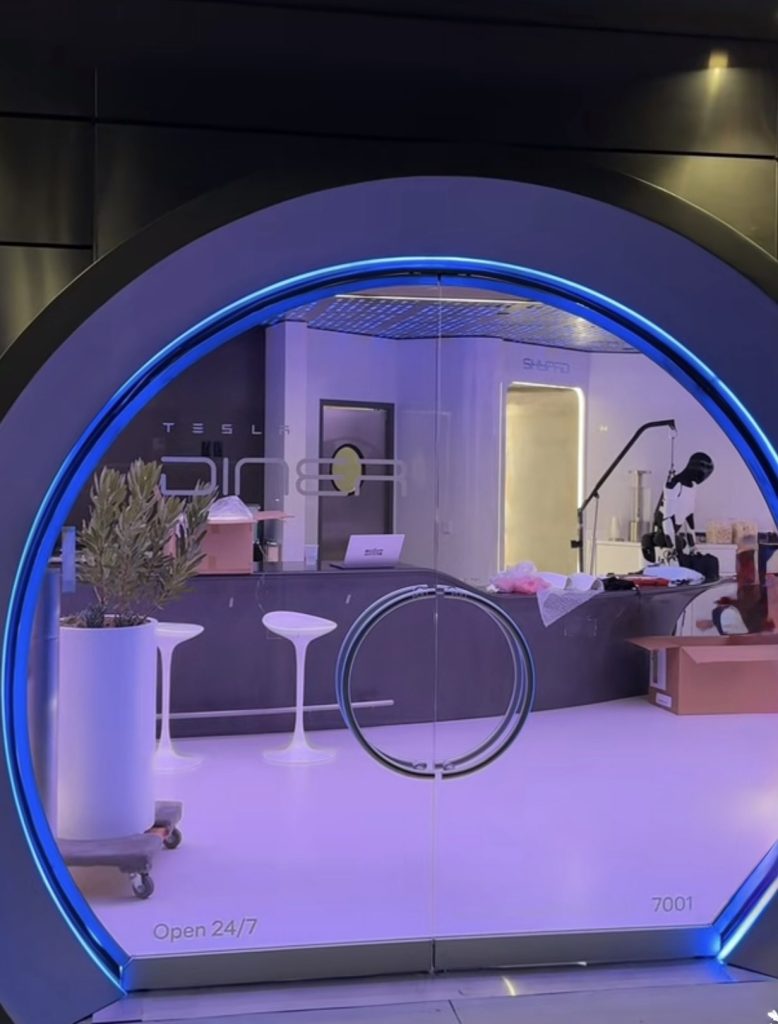
Credit: TeslaKing420 | X
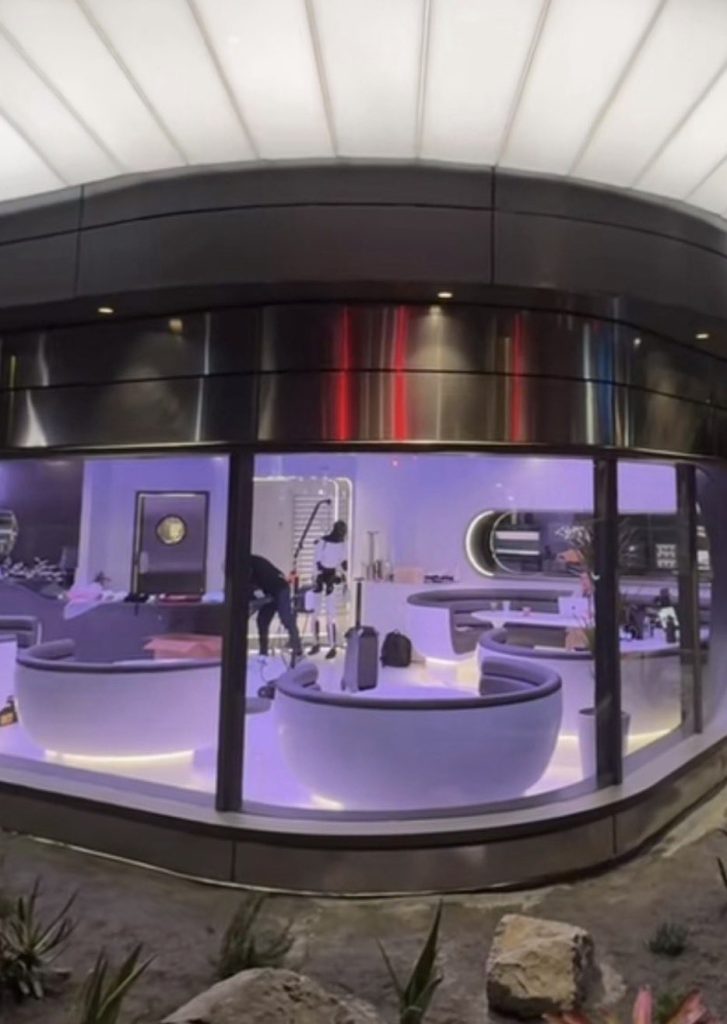
Credit: TeslaKing420 | X
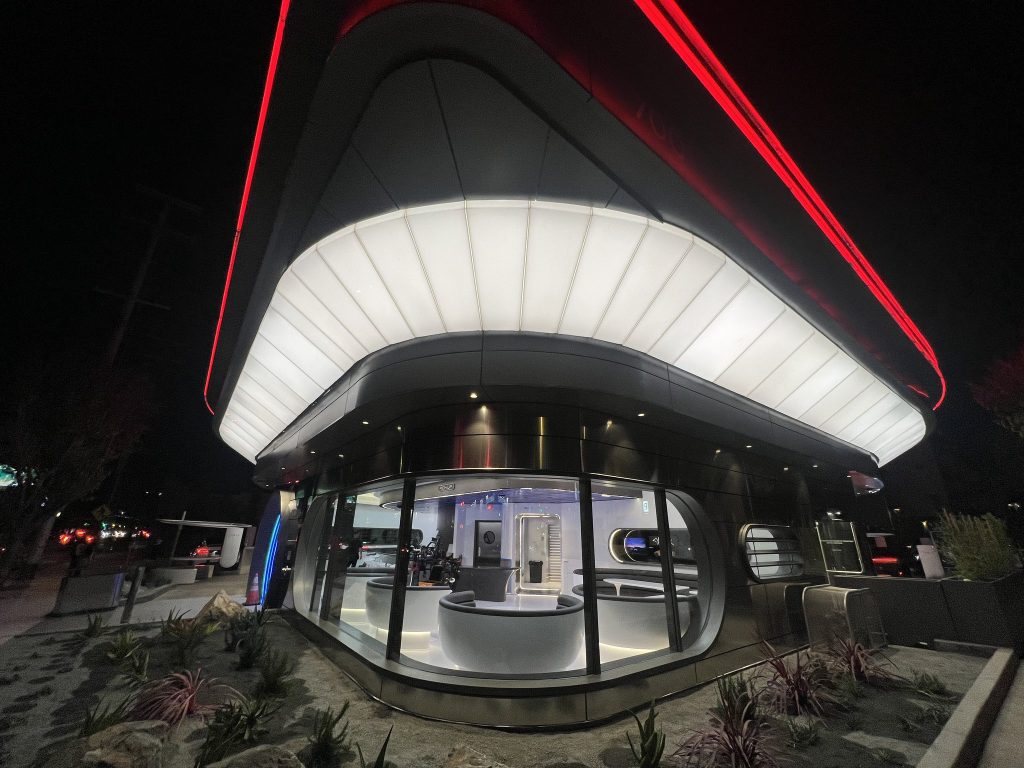
Credit: Brad Goldberg (via Sawyer Merritt on X)
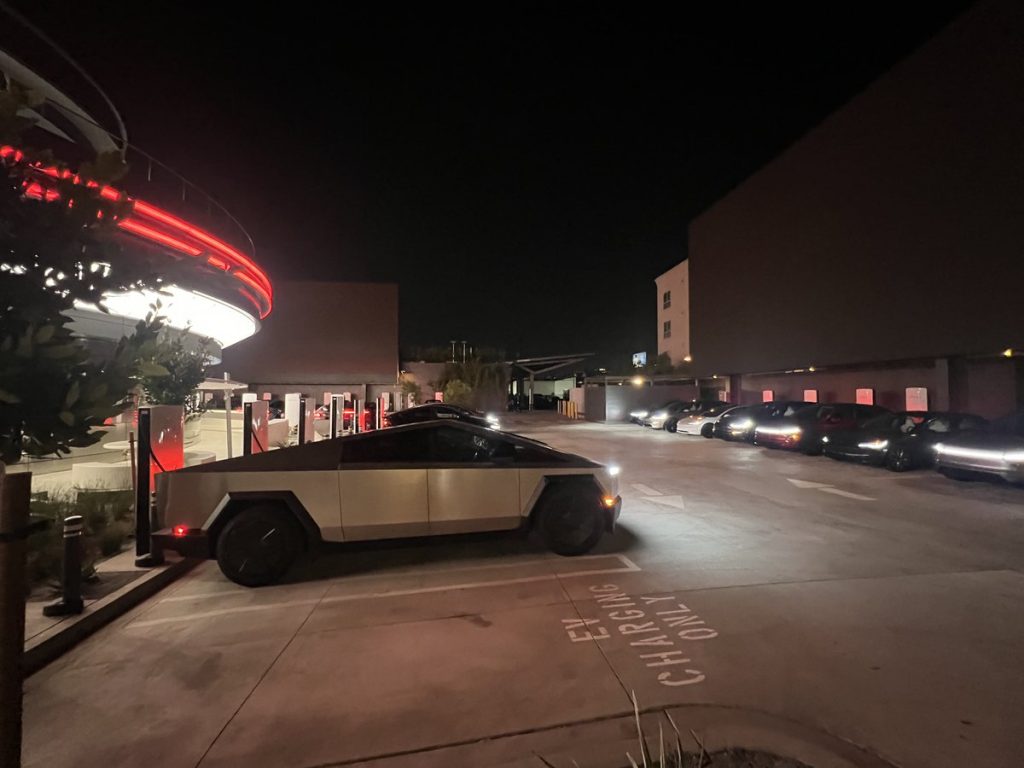
Credit: Brad Goldberg (via Sawyer Merritt on X)
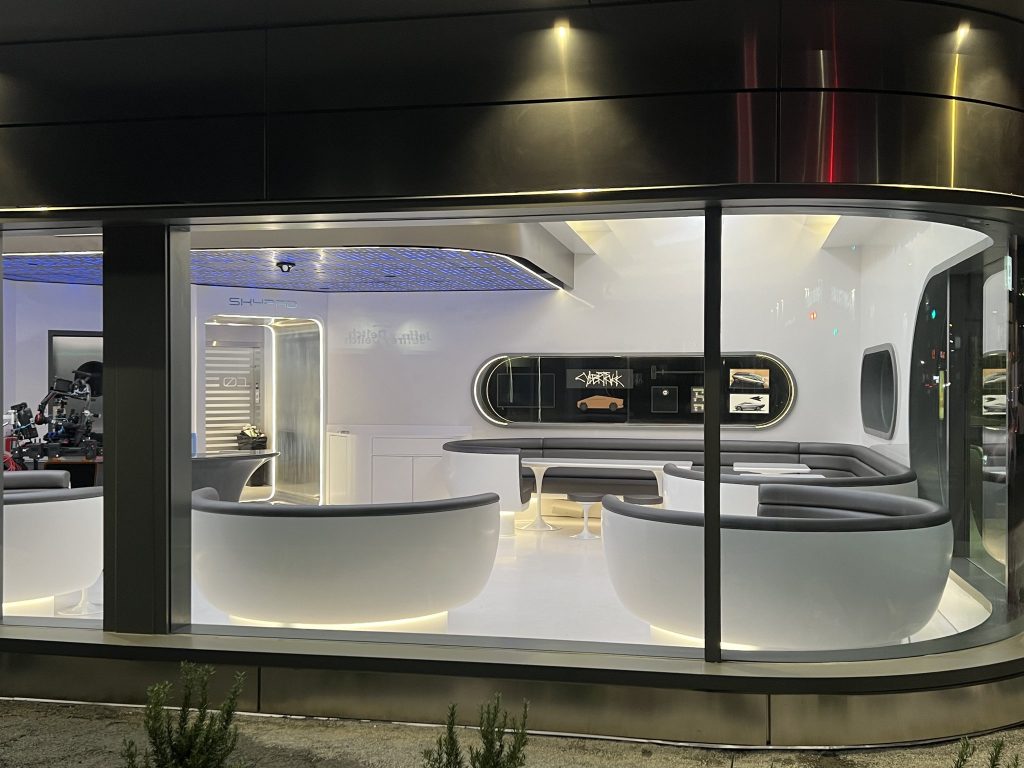
Credit: Brad Goldberg (via Sawyer Merritt on X)
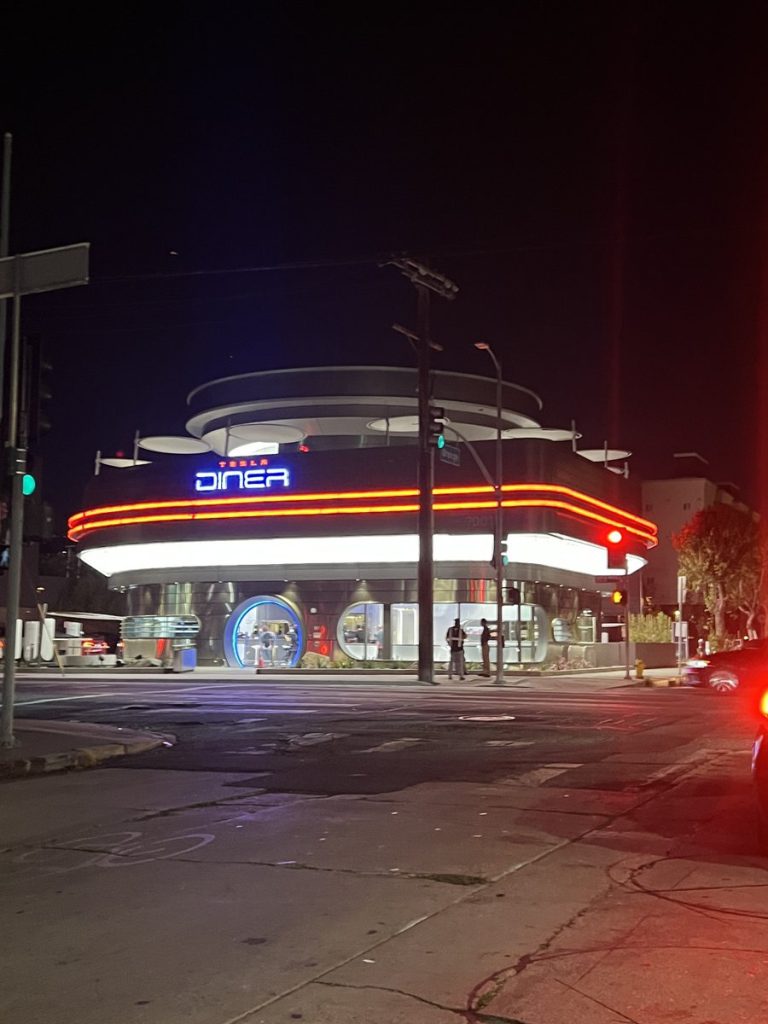
Credit: Brad Goldberg (via Sawyer Merritt on X)
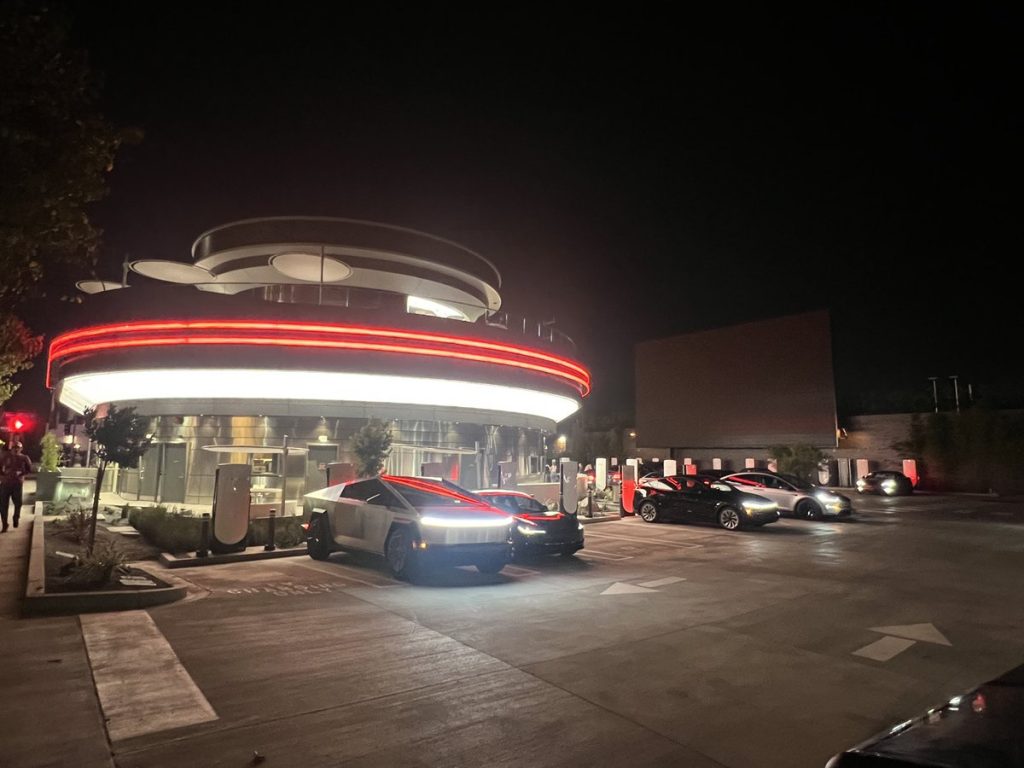
Credit: Brad Goldberg (via Sawyer Merritt on X)
READ MORE ON TESLA’S LA DINER: Tesla readies Drive-In Diner Supercharger for launch with app inclusion
When will the Tesla Diner open to external customers?
While it’s still not open to external customers yet, the news again suggests that the company could be close to an official opening date. Tesla first broke ground on the Diner in September 2023, after receiving a wave of building permit approvals throughout that year. Teslarati also covered much of the construction progress throughout last year, including when crews installed the first and second drive-in screens.
Located at 7001 West Santa Monica Boulevard, the idea was first discussed in 2018 by Musk and a few others on Twitter, featuring 1950s rock and roll, waiters on roller skates, and drive-in movie theater screens playing clips from some of history’s best movies. Notably, the photos of the front doors also show that the site will be open 24 hours a day, 7 days a week, whenever it does end up opening.
Tesla’s progress on Supercharger with diner, drive-in seen in aerial footage
-

 Elon Musk2 weeks ago
Elon Musk2 weeks agoTesla investors will be shocked by Jim Cramer’s latest assessment
-

 News2 days ago
News2 days agoTesla debuts hands-free Grok AI with update 2025.26: What you need to know
-

 Elon Musk4 days ago
Elon Musk4 days agoxAI launches Grok 4 with new $300/month SuperGrok Heavy subscription
-

 Elon Musk6 days ago
Elon Musk6 days agoElon Musk confirms Grok 4 launch on July 9 with livestream event
-

 News1 week ago
News1 week agoTesla Model 3 ranks as the safest new car in Europe for 2025, per Euro NCAP tests
-

 Elon Musk2 weeks ago
Elon Musk2 weeks agoxAI’s Memphis data center receives air permit despite community criticism
-

 News4 days ago
News4 days agoTesla begins Robotaxi certification push in Arizona: report
-

 Elon Musk2 weeks ago
Elon Musk2 weeks agoTesla scrambles after Musk sidekick exit, CEO takes over sales

